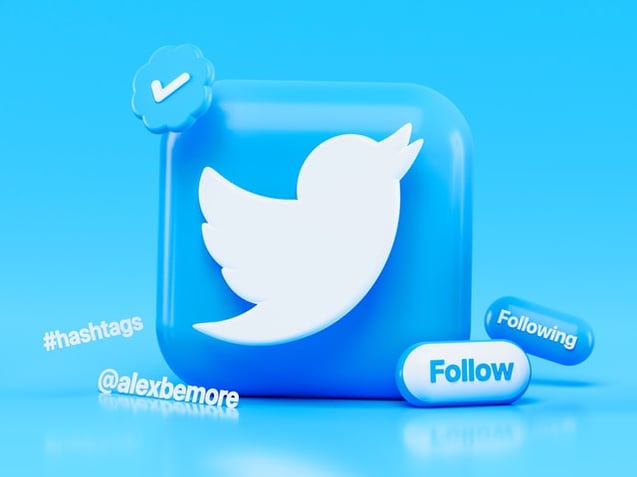Index Content
The recently created term hashtag refers to the characters preceded by the # symbol, also called hashtag or hashtag. When the characters are finished with a space, the word is usually highlighted in some graphic way. It usually appears in bold, in a different colour or both at the same time. In this way, it is a part of the post or text that draws attention to itself, which already hints at why they are so important.
Hashtags have a special function in social networks, unlike, for example, when writing a hashtag in a document. In social networks they function as a tool for grouping content. They are, so to speak, category creators. All tweets containing a hashtag, such as #TGIF, will appear as soon as the name of the hashtag is searched for in the search engine.
All network creations with the same hashtag are linked with an invisible thread and grouped together, although you can only see the group if you specifically search for that word or words. They are therefore an excellent tool for boosting a marketing strategy, as they make it easier to find your posts.

Jan Baborák via Unsplash
Advantages of hashtags
Using hashtags on social networks has some advantages that are common to all of them:
- It's a way to track posts so it's really useful for businesses, but it should be used differently on each social network, as the language of each is different.
- They trend, which also helps drive a post through the crowd, and that's one of the reasons, if not the most important reason, why they should be used - Twitter, for example, uses hashtags to detect what tweets are talking about.
- They increase interaction - posts with hashtags become part of a group, any group, which makes them more discoverable and therefore get more attention.
- They contribute to creating a brand image: Companies can create their own Hashtags as a slogan, to be identified with it and for their customers and followers to use it as a way of communicating with them.
- It favours communication with the public, who can find the brand more easily through hashtags and vice versa. In addition, the use of this tool is already a topic of conversation in itself.
How to use hashtags:
In general terms, to create a good hashtag we must respect the following rules:
- Do not use spaces. The hashtag only covers the word following the hashtag (#), so that when this key is pressed, the device you are using will understand that the hashtag ends there.
- Use as few words as possible- a hashtag can contain several words, but since they cannot be spaced out, the more words it contains, the more complex it will be to read.
- Use capital letters at the beginning of each word: this helps the eye to detect the beginning of the next word and makes it easier to read.
- Do not use pound signs, as they cut off the hashtag just like the space.
There are also some general guidelines for all networks on which hashtags to use. It is good advice to join hashtags that are trending. With this, these publications become trending too. It is especially advisable to do so if they are related to your company or brand. If not, it is only advisable to use them if they are generic. Using a hashtag specific to another brand or sector is counterproductive as it can lead to confusion about the meaning and/or values that the company wants to project.
But the reality is, as we said, that each social network has its specific language and the hastag, as an element of digital language, must be adapted to the resource being used.
On Instagram:
- Hashtags are usually placed at the end of the publication.
- It is advisable to separate them from the text of the post with several spaces.
- If you want to highlight one in particular, it is advisable to put it in the text or right at the end, but the reality is that it is more advisable to write them as a way of tagging the publication and to form part of a group that is traceable.
- The number of hashtags that can be used is greater than on other networks; in fact, you can use as many as you want, as the character limit is less than on Twitter, for example.
- Hashtags can be followed on Instagram, so it is highly recommended that you create your own, as it will be like a second profile that your customers can follow and participate in.
- You can also search for hashtags in the same way that you search for profiles, which is why adding several, always related to the publication, will favour engagement. The search engine also shows the number of publications with that hashtag. But, unlike Twitter, you have to be the one to search for these trends, they do not appear highlighted anywhere.
- Join instagram's own general hashtags like #instagood or #instapic and others less specific to the application like #picoftheday #follow #cute #nature
- Use hashtags specific to your niche or segment, such as #lifestyle or #foodblogger.
- Location hashtags are very recurrent and useful , even if you can include the location specifically, including it as a hashtag will make it easier to be found.
- Acronyms in hashtags such as #TGIF (Thank God It's Friday) or #TBT (Throwback To) are also a form of trending
On Twitter:

Alexander Shatov via Unsplash
- It is best to limit their use to what is necessary, as they reduce the number of characters. It is not recommended to use more than two hashtags.
- They are very useful for tracking a topic of conversation, so it is best if they are words that have to do with the content of the tweet. These types of hashtags are called product or service hash tags , for example #vegan #cars #food
- It is also advisable to join trends.
- The tone is much more lighthearted. On Twitter, brands allow themselves to be humorous and satirical. In fact, customers love that touch of comedy.
- It can be searched by hashtags, just like Instagram, so it is also advisable to create your own.
- If you create a thread, it is enough to write the hashtag in one of the tweets, as the rest will be linked to it.
On Linkedin
- They are an opportunity to be discovered, so you should use those that describe who you are.
- It is advisable to include one or two in each post, no more. The important thing about Linkedin posts is not the hashtags, which act more as a tool to track the post, they are searchable.
- They are searchable. If you add the hashtag #InboundMarketing to your new job, for example, recruiters who are looking for people qualified in this branch of marketing will be able to put that hashtag in the search engine to locate all the people with knowledge on the subject. Of course, there are more people with the qualifications than those who use the hashtag, but it helps to be discovered above the rest.
- The type of hashtags that work best for Linkedin is descriptive: highlight the words that define your work and skills, your fields of study...
Some useful tools to locate, discover and analyse the trend of hashtags are, for example, Hashtagify, the facebook search engine(facebook.com/hashtag/_____) or, failing that, the Twitter trend bar itself. It is located on the home page, specifically on the left-hand side. The most used hashtags at the moment that have managed to become a trend appear there.




